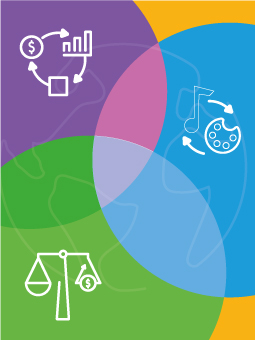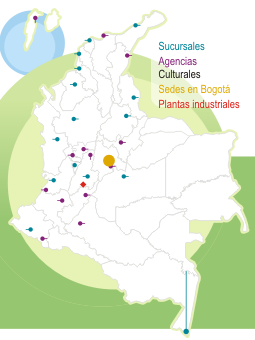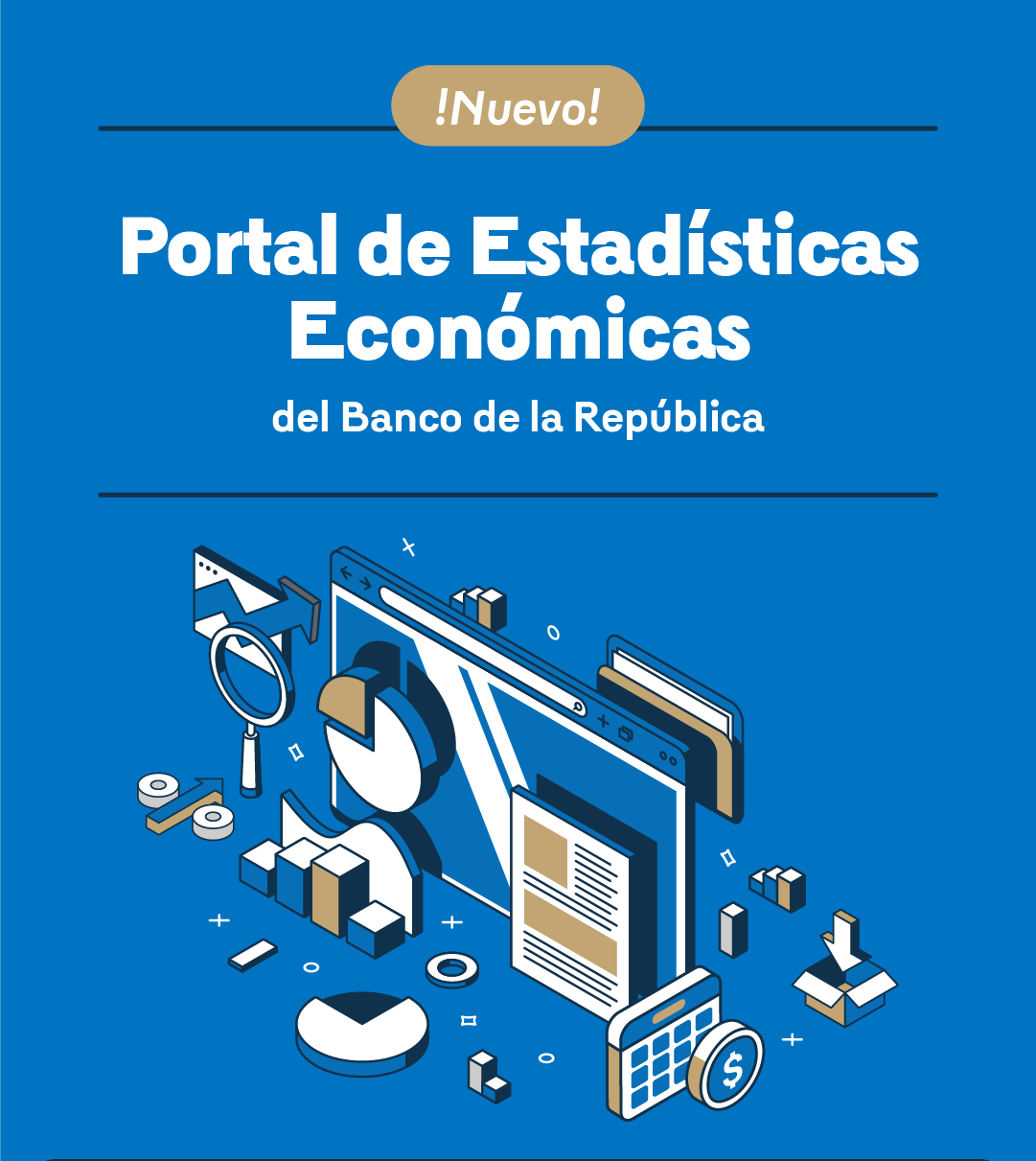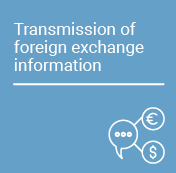See the Special Financial Stability Reports
The Special Financial Stability Reports are published together with the Financial Stability Report and provide a more detailed analysis of some aspects and risks relevant to the stability of the Colombian financial system. This edition includes: i) Analysis of the real estate credit portfolio and market in Colombia, ii) Concentration and competition in the deposit and credit markets, iii) Financial inclusion, iv) Market risk, v) Household financial position, and vi) Credit risk.
Analysis of the Real Estate Credit Portfolio and Market in Colombia
This special report analyzes Colombia’s housing market and mortgage credit dynamics to identify potential risk sources that could affect the stability of the economy and the financial system. In particular, the behavior of variables associated with the sector, its financing, the levels of supply and demand, and the price of real estate, among others, are studied. In a macroeconomic context of high inflation and high interest rates, the findings of this report suggest a slowdown in this market. On the one hand, there were lower credit disbursements for house purchases, a drop in the financial deepening indicator of this type of credits, and a lower purchase intention of this type of property. In addition, available units of new housing increased, while units sold showed a lower dynamic. This contributed to a slowdown in prices. Although this market shows lower activity, the financial sector continues to show good results in credit risk indicators for residential and construction loans.
Concentration and Competition in the Deposit and Credit Markets
This report analyzes the level of concentration in the credit and deposit markets in Colombia and some peer jurisdictions, such as Mexico, Peru, and Chile, since this is a relevant aspect in the materialization of credit and liquidity risks. Furthermore, recognizing that the relationship between concentration, competition, and market power is not linear, an additional exercise is presented to determine the degree of competition and market power of financial intermediaries in the Colombian credit market.
Financial Inclusion
This special report analyzes financial inclusion in the credit market from a gender approach. It analyses the characteristics of the loan stock and credit disbursements granted by credit institutions (Cis) to men and women. As of March 2023, there are still gaps that mostly put women at a disadvantage as regards the number of loans, loan amounts, and interest rates. This contrasts with the behavior of the aggregate risk indicators, which are better for women in all portfolio types. Furthermore, there is a tendency to close the gaps, especially in the housing loan portfolio. By type of CI, banks show larger gaps favoring men regarding the number of loans and loan amounts.
Similar results are found for credit disbursements, which mostly reflect higher disbursements to men. As of May 2023, microcredit shows the smallest gap by type of loan, followed by housing and consumer loans. By credit segment, disbursements were higher for men, except for some segments such as credit card consumption for customers with incomes below two legal monthly minimum wages, acquisition of low-income housing (VIS in Spanish), house purchase in real value unit (UVR in Spanish), and low-value microcredit.
Market Risk
This special report analyzes the local financial system's main sources of market risk and presents an analysis of the volatility transmission between the debt and stock markets to identify whether a market was a generator or receiver of volatility at a given point in time. In addition, an analysis is carried out of the estimated overnight value-at-risk of the three markets’ returns; also, the joint dynamics that may be exhibited by the local and U.S. public debt markets is studied to identify patterns and the possible incidence of U.S. events on the local market. Results show that the debt and stock markets are in a lower volatility regime, which implies a passive transmission of volatility between them, with the stock market being the main recipient. Moreover, an event study shows slight changes in the dynamics of public debt market rates. Finally, neither monetary policy shocks nor changes in TES (Bonds issued by the Colombian government and managed by Banco de la República) holdings by foreign investors have led to significant changes in the TES’s interest rates. Household Financial Position.
The dynamics of the main markets in which the financial system participates (e.g., credit, deposits, and fund management, among others) are closely linked to the performance of the household sector, given its preponderant role in each of them. Considering the above and the high growth in credit for this segment of the economy, this semi-annual report analyzes the evolution of the main items of the financial balance sheet of households. It also offers an assessment of their potential implications on the financial system. This report uses information from National Financial Accounts filtering by institutional sector generated from the joint work carried out since 2016 between the National Administrative Department of Statistics (DANE) and Banco de la República (the Central Bank of Colombia), with support from the Economic Cooperation of the State Secretariat for Economic Affairs (SECO), financed by the Government of Switzerland, and with the technical support of the International Monetary Fund (IMF). Particularly, this source of information has an annual frequency between 2005 and 2016 and from that date onwards it is presented quarterly.
Credit Risk
The Financial Stability Report for the first half of 2023 suggested that the deterioration trend in the quality of the consumer portfolio could persist in the first part of 2023, in a context of slowdown in economic activity and high indicators of household debt and financial burden. Likewise, the Report pointed out that the risk indicators of the corporate portfolio could be affected by a possible deterioration in the performance of firms and high financing costs. In this context, this special report analyzes the credit risk exposure and behavior of credit institutions (CIs) with the latest available information to continue closely monitoring the evolution of delinquency. According to the analysis presented, as of May 2023, credit continued experiencing the slowdown it had been showing since July 2022. Regarding the cost of financing, interest rates remain at high levels given the monetary policy stance of Banco de la República; however, slight corrections are observed in the credit market modalities. Meanwhile, the non-performing loan portfolio and the portfolio at risk have accelerated in all modalities, which has increased the portfolio quality indicators of CIs between September 2022 and March 2023. This has been mainly explained by the consumer portfolio and the deterioration of the personal loans and credit card segments. Other portfolios have also shown deterioration in their indicators so far in 2023, but of a lesser magnitude. Nevertheless, these indicators are below the average of the last five years. Considering that a slowdown in the economy, high interest rates, and restrictive financial conditions are expected for 2023, pressures on borrowers' payment capacity persist, making it necessary to continue monitoring the dynamics of credit allocation and risk materialization in the near future.
















































